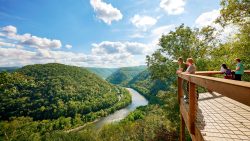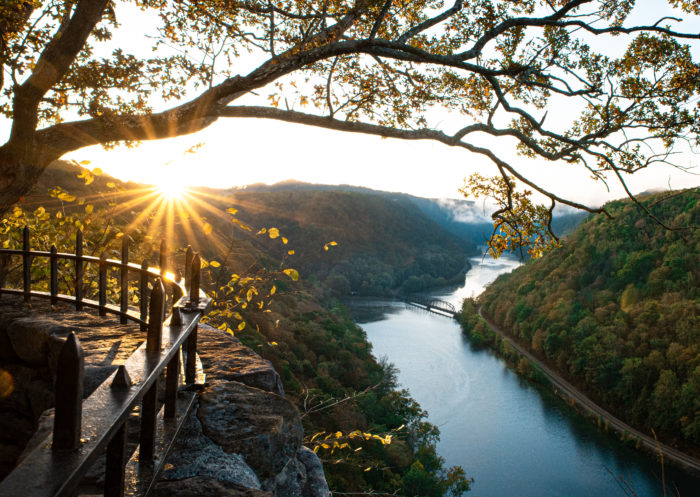Iconic quilt patterns and where to find them
West Virginia honors its long-shared quilting tradition with distinct Appalachian style.
Quilting roots
In days gone by, quilts played a major role in the home and community. Quilts represented warmth, friendship, tradition and self-sufficiency.
West Virginia’s earliest settlers were rarely wealthy, so they used small scraps of fabric because larger amounts of cloth were hard to get, and costly.
Over the years, families and regions honed the craft into specific patterns and techniques, which were passed down through their children. Quilting was a social craft, and women would gather at Quilting Bees and work together to finish large quilts— and enjoy the time, or maybe a communal meal together
Quilt patterns became indicative of certain regions. Popular patterns in West Virginia represent our agricultural society, and the state’s role in the Civil War.
- Log Cabin– This pattern is also called “Sunshine and Shadow.” It symbolized warmth, home, love and security as pioneers traveled west.
- Wedding Quilt– This design is made out of interlocking rings. Floral patterns foretold a healthy, happy marriage. But hearts were bad luck, because they could be broken.
- Turkey Track– The original name “Wandering Foot” led women to think men who slept under these quilts were more likely to wander off. When the pattern was renamed, it ended the stigma and the patterns regained popularity.
- Bow-Tie– This hourglass pattern usually stood for morning, midday, evening and night, or time well spent. For some slaves, it represented a bow tie, part of a disguise they might receive after escaping to freedom.
- Shoo Fly– Some say this symbol marked a sympathizer of slaves escaping north. Buildings with this quilt outside were safe houses for escaping slaves.
- Dresden Plate – This pattern got its name from the elaborate designs on porcelain plates, especially those from Dresden, Germany. The patterns harkened back to settlers’ European ancestors.
Barn Quilt Trails
Explore quilting heritage along one of West Virginia’s regional quilt trails. Follow the historic patterns on barns through the scenic countryside, and stop into unique attractions and communities along the way.
Monroe County has one of the largest quilt trails, with more than 60 squares. But several regions have trails, each with their own distinct designs and attractions along the way.
Events
Check out the modern-day equivalent of a Quilting Bee— and maybe even take home one of your own!
- Celebrate 3 full days of juried exhibits, auctions, workshops and more at the West Virginia Quilt Festival in Summersville.
- Take home one of West Virginia’s finest artisan pieces from the prestigious juried Annual Quilt and Wall Hanging Show in Charleston.
- Get a peek at the intricate handiwork behind every stitch during live demonstrations at the Country Roads Quilt Guild show in Morgantown. You may even win the chance to buy one of these one-of-kind pieces.
- Vote for your favorite creative interpretation of this year’s quilting theme at Parkersburg’s Mid-Ohio Valley Heritage Quilt Show every spring.
Stores
The Mountain Quilt Quest Hop is a great way to explore all the quilting shops around the state. This 4-day event is filled with fabric, fun and prizes, along 10 shop stops. Each has different block patterns and fabric kits so you can create your own quilt.
If you want to buy a finished quilt, you can find them at quilting, crafting, primitive and antique shops around the state. Try The Stitching House in Buckhannon, Quilts of Joy in Sutton, or Cabin Creek Quilts online.
Some stores will even work with you to commission a custom design. Remember: this craft takes skill and patience, so it might take several weeks to see your new quilt!
This post was last updated on July 21, 2020








